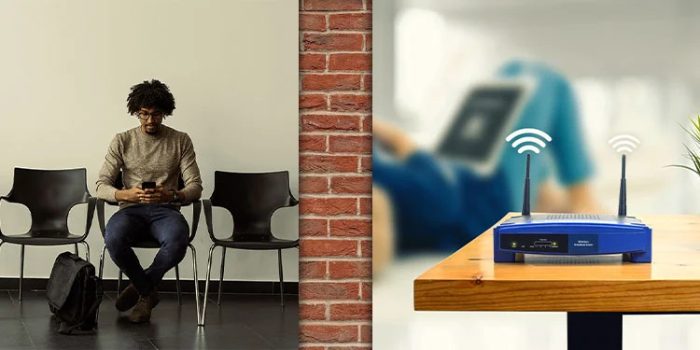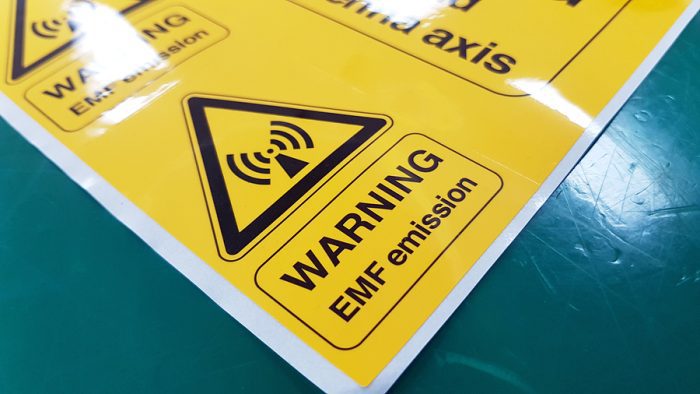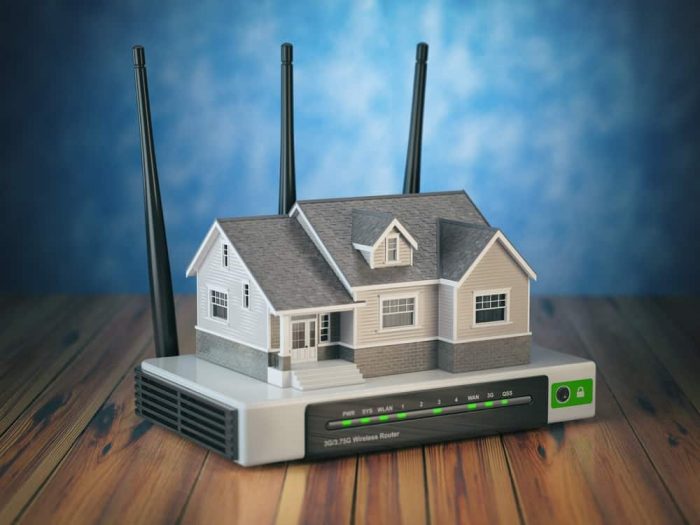In the world we are living in today, we are constantly being exposed to radio signals. At home, at work, and everywhere on the street. And actually, its influence on our health carries potentially terrifying consequences. It’s just impossible for anyone not to have wondered how does WiFi go through walls and what effect these frequencies generate.

How Does WiFi Go Through Walls?
The most basic explanation to this question is – WiFi is just a radio wave, something like a form of light, and it can easily pass that non-conductive solid object. WiFi signal is millimetric, so it’s very prone to absorption, and it’s easy to penetrate through any wall.
Nowadays, most walls aren’t very electrically conductive, so nothing can completely block radio waves. The more they are conductive, the bigger their strength to sort out the signal to the extent they become grounded.
WiFi is just a radio wave
Are you wondering how does WiFi go through walls? Well, picture it the same as visible light travels through windows. Every single material has a certain wavelength of light to absorb.
WiFi is a radio wave; even though it’s a short wavelength, it can still pass that non-conductive solid object. The only thing that can block radio waves is electrically conductive materials. The more conductive, the more they tend to “sort out” the signal. Generally, most walls aren’t very electrically conductive, so they are not completely non-conductive either.
Since WiFi waves are just forms of light, the same as X-rays, microwaves, and visible light, WiFi energy can go through walls without any problem, as it falls within the range of large microwave frequencies between 2.4 GHz and 5 GHz.
EMF Radiation and Wall Materials
EMF radiation largely depends on the structure and the materials of the wall
WiFi uses a band of the electromagnetic radiation spectrum. However, these wavelengths of the EMF spectrum absorb and get impacted differently through various types of materials.
So, if you are concerned about EMF radiation exposure through walls, it’s important to take into consideration the structure and the materials of the wall, as they are far more important than its thickness.
The extensive tests of how common building materials can shield electromagnetic fields by The U.S. Institute of Standards and Technology show that the standard building materials provide very poor shielding. To get better shielding against EMF radiation from WiFi, you’ll need:
- 8 inches of solid concrete
- 18 inches of solid lumber
- 24 inches of hollow core concrete blocks
Superior shielding materials: Concrete masonry walls, metals, and heavy wood
For everyone concerned about the EMF radiation from WiFi penetrating through walls, I can say that the masonry walls are the best barrier as they are the strongest in resisting WiFi signals.
Metals are far superior in shielding properties compared to masonry walls.
The test conducted by the U.S. The National Institute of Standards and Technology also showed that heavier types of wood, like oak, might have a good shielding effect.
Very poor resistance materials: Brick wall, plaster, lath wall, drywall
Brick walls have a significant effect on WiFi. The signal is heavily attenuated even though it’s still not fully blocked; generally, it will have a huge impact on your connection speed and reliability, creating an only minor blockage of EMF radiation from the WiFi.
For the brick walls to be useful, they need to be unrealistically thick; otherwise, they won’t provide much useful shielding.
Other materials like drywall and windows are proven transparent to radio waves.
The old lath and plaster walls are known for allowing the most WiFi signal because the lath is just wood strips. If the plaster wall has a metal mesh backing, then it will be a bit better to block the WiFi signal.

The Hazardous Effects of WiFi EMF Radiation
Wireless routers emit electromagnetic radiation in the low gigahertz frequency, and this level is observed as potentially dangerous to people.
There are several factors that influence the risk of WiFi routers, including how old the router is, how long you’ve been using it, the general health of the individuals residing in your home, and the overall EMF exposure you are exposed to.
Using WiFi before bedtime can affect the sleeping pattern and mental health
Your WAP transmits about 1 watt of power for each radio band (2.4 GHz and 5 GHz). Your other connected devices like computers, phones, and printers do the same when they are on. While the general opinion is that this energy isn’t dangerous. As an IT expert, I can say that this opinion is wrong, and let me explain why.
The energy from the radio transmitters goes down as the square of the distance between you and the transmitter. The energy will go down by 4 GHz if the distance goes up by 6.5 feet, and if the distance goes up by 13 feet, the energy will go down by 16 GHz.
Let’s say that any person spends about ⅓ time in bed, so if you have these devices in your bedroom, they will certainly affect you long term; it’s best to keep them outside.
WiFi exposure is threatening to human bodies and their reproductive health
Many scientific studies demonstrate several detrimental effects of WiFi on the human body, including increased oxidative stress, poor reproductive health, disrupted memory, sleep deprivation, anxiety-like behavior, fatigue, and increased norepinephrine secretion at night.
This study has revealed that excessive screen exposure can affect sperm count, motility, and DNA integrity in men and reduce the production and secretion of estrogen and progesterone learning to reduce reproductive efficacy and impair fertility in females.
High oxidative stress reported by pregnant women being exposed to WiFi radiation
Another study on the Health Effects of WiFi radiation states that a group of hundred pregnant women self-reported that using WiFi and mobile phones caused oxidative stress in the blood and placenta immediately collected after birth. Some of these parameters were associated with WiFi exposure at the workplace and at home.

How to Protect Yourself From WiFi EMF Radiation
Create a Faraday cage
One of the most effective ways to protect yourself from WiFi EMF radiation is creating a Faraday cage by surrounding the router with metal that’s grounded. Keep in mind that this method would make it useless if that’s your intent.
Turn off the router and the WiFi on all devices
Another way to block the radiation is to turn off the WiFi. This means turning off WiFi on all your devices, including your router, since they continue to transmit WiFi from other networks they might connect.
